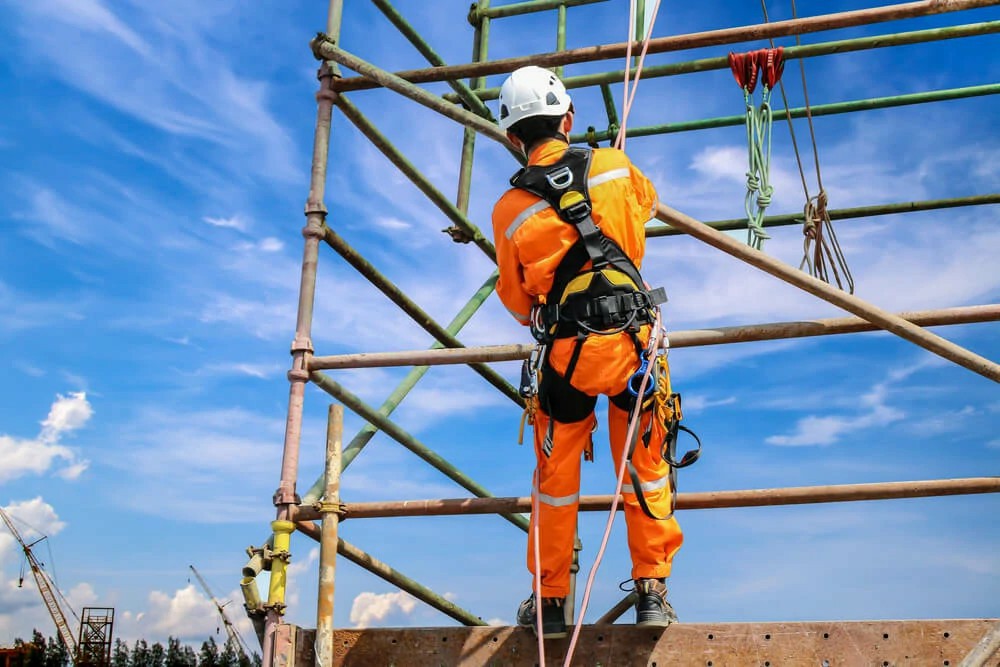Integrating Working at Heights Safety Training into Your Company Policies: A Comprehensive Approach
In today's fast-paced work environment, the safety of employees is paramount, particularly for those engaged in tasks at elevated heights. Alongside essential risk management practices, implementing Working at Heights Safety Training is vital not only for compliance but also for creating a safer workplace culture. This post will explore how businesses can effectively integrate Working at Heights training into their operational policies, emphasizing key strategies such as internal safety audits, refresher training, and compliance monitoring.
The Importance of Working at Heights Safety Training
With statistics indicating that a significant portion of workplace accidents involve falls from heights, employers must prioritize safety training. Working at Heights certification offers comprehensive education on the best practices for preventing accidents while utilizing ladders, scaffolding, and other elevated tools. Providing employees with adequate training not only adheres to legal requirements but also instills a culture of safety, ultimately enhancing overall productivity.
Conducting Comprehensive Risk Assessments
The first step in integrating Working at Heights training into company policies is performing a thorough risk assessment. Here’s how:
- Identify potential hazards: Evaluate areas where employees work at heights. Look for variables such as ladder placements, scaffold integrity, and building structures.
- Analyze risk levels: Assess the likelihood of falls or injuries and categorize them based on severity and frequency.
- Document your findings: Maintain clear records of risk assessments to ensure ongoing compliance and improvement.
Implementing Structured Training Programs
After completing risk assessments, companies should implement structured Working at Heights courses. Here are effective strategies:
- Onboarding Training: New employees should undertake a full Working at Heights course online or in-person, ensuring they understand the protocols before ever working at heights.
- Ongoing Education: Regularly conduct training sessions to keep knowledge fresh and address any changes in regulations or equipment.
- Utilize Certified Trainers: Engage trainers who have proven expertise in Certified Working at Heights Training to lead sessions.
The Role of Internal Safety Audits
To ensure consistency and compliance with safety practices, internal safety audits must be an ongoing part of your strategy:
- Schedule Regular Audits: Conduct audits at least annually or bi-annually, examining compliance with safety training requirements.
- Engage Employees: Involve team members in audits to gain valuable insights and promote a safety-first culture.
- Act on Findings: Utilize audit outcomes to make necessary changes to policies and improve overall workplace safety.
Mandatory Refresher Training
Even the most thorough training programs can fade from memory over time. Thus, refresher courses are crucial:
- Set Timelines: Establish specific intervals for refresher training—typically every 2-3 years—to reinforce safety protocols.
- Utilize Online Platforms: Offer Working at Heights online courses for ease of access, making it easier for employees to keep their training current.
- Monitor Participation: Track employees’ completion of refresher courses to ensure compliance and accountability.
Compliance Monitoring and Documentation
Compliance is essential for both legal and safety standards. Here’s how to ensure adherence:
- Keep Detailed Records: Document all training sessions, including participant names, dates, and topics covered. This information is crucial for audits.
- Track Certification Expiry: Set reminders for when employee certifications expire, ensuring timely renewals.
- Establish Safety Metrics: Develop performance metrics to measure the effectiveness of training and make adjustments as necessary.
Cultivating a Safety-First Culture
An essential aspect of incorporating Working at Heights Certification Ireland into company policies is fostering a culture focused on safety:
- Encourage Open Communication: Create an environment where employees feel comfortable reporting safety concerns.
- Recognize Safe Behavior: Acknowledge and reward employees who consistently follow safety protocols.
- Lead by Example: Management should exemplify commitment to safety, participating in training sessions and adhering to safety measures.
Real-World Examples of Success
Companies that seamlessly integrate Working at Heights Safety Courses often yield impressive results:
- Construction Firms: Organizations that mandated safety training saw a drastic reduction in fall incidents by more than 50% within just a few months.
- Manufacturing Industries: Regular audits and refresher courses contributed to lower workers’ compensation claims, saving businesses significantly and improving overall morale.
Conclusion
Integrating Working at Heights training into your company’s policies is a dynamic approach toward achieving safety excellence. By conducting comprehensive risk assessments, implementing thorough training programs, and maintaining diligent compliance monitoring, businesses can position themselves not only to meet legal obligations but to foster a culture of safety that resonates throughout the workforce.
Are you ready to take the next step in enhancing workplace safety? Enroll your employees in certified Working at Heights Safety Courses today. For more information and to begin your journey, visit our website or contact us at [email protected].



 349,500 Offered Certificates
349,500 Offered Certificates
 24/7 Online Training
24/7 Online Training
 Money Back Guarantee
Money Back Guarantee
 Fully Accredited Courses
Fully Accredited Courses
